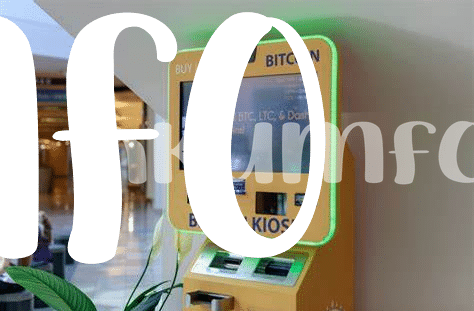Overview of Digital Asset Reporting Regulations 📊

Digital asset reporting regulations in Austria aim to provide a structured framework for monitoring and disclosing digital asset transactions. These regulations are designed to enhance transparency and accountability in the burgeoning digital asset industry, ensuring that relevant information is accurately reported to regulatory authorities. By establishing clear guidelines on reporting requirements, Austrian regulations seek to create a level playing field for market participants and promote investor confidence.
Under these regulations, entities engaging in digital asset activities must adhere to specific reporting standards, which may vary depending on the nature of the digital asset transactions involved. Compliance with reporting obligations is crucial for maintaining regulatory compliance and mitigating potential risks associated with non-compliance. Overall, a comprehensive understanding of digital asset reporting regulations is essential for industry participants to navigate the evolving regulatory landscape effectively.
Key Reporting Requirements for Digital Assets 💻
Key reporting requirements for digital assets include detailed transaction records, including the date, time, amount, and the parties involved in each transaction. Additionally, accurate valuation of digital assets must be provided, along with identifying any gains or losses incurred. Transparency is paramount, requiring disclosure of any related financial risks and uncertainties. Compliance with anti-money laundering (AML) and know your customer (KYC) regulations is crucial to ensure the legitimacy of transactions. Regular reporting to regulatory authorities is necessary, showcasing a commitment to operating within legal frameworks. Establishing robust data security measures to protect sensitive information is imperative. Clear documentation and audit trails must be maintained to facilitate seamless reporting processes. Embracing technological solutions for automated reporting can streamline operations and enhance accuracy. Staying abreast of evolving reporting requirements and implementing proactive measures are key to navigating the dynamic landscape of digital asset regulations effectively.
Compliance Challenges and Solutions 🛠️

Navigating compliance challenges in the realm of digital asset reporting can be a daunting task for businesses operating under Austrian regulations. The evolving nature of this sector often poses complexities that demand a proactive approach to ensure adherence to reporting requirements. One of the primary obstacles is the lack of uniform standards across jurisdictions, making it crucial for companies to stay abreast of changing regulations and interpret them accurately to avoid potential penalties. Moreover, the dynamic nature of digital assets introduces additional layers of complexity, especially when it comes to valuing these assets accurately for reporting purposes.
Fortunately, there are solutions available to help businesses address compliance challenges effectively. Implementing robust internal controls and hiring specialized professionals can enhance reporting accuracy and streamline the compliance process. Leveraging advanced technologies such as blockchain analytics and automated reporting tools can also aid in ensuring data integrity and transparency, thereby mitigating compliance risks. By proactively identifying and addressing potential challenges, companies can not only navigate the regulatory landscape more efficiently but also foster trust among stakeholders in their reporting practices.
Impact of Reporting Obligations on Industry 🌐

The implementation of reporting obligations in the digital asset industry has significantly influenced the way businesses operate. From ensuring transparency to enhancing regulatory oversight, these requirements have prompted companies to reevaluate their strategies and procedures. This shift has led to an increased focus on compliance, risk management, and the adoption of innovative technologies to streamline reporting processes. Consequently, industry players are proactively investing in robust systems and frameworks to meet these obligations while striving to maintain a competitive edge in the market. The impact of these reporting requirements is not limited to individual organizations but also extends to the broader ecosystem, influencing market dynamics and shaping industry standards. As regulatory frameworks continue to evolve, staying informed about upcoming changes, such as the regulatory environment in Armenia, is essential for businesses to adapt effectively and thrive in a constantly evolving landscape.
Future Trends in Austrian Regulatory Landscape 📈
In the evolving regulatory landscape of Austria, there is a clear shift towards greater transparency and oversight in the digital asset space. Authorities are increasingly focusing on enabling a conducive environment for innovation while ensuring robust regulatory frameworks to safeguard investor interests and market stability. This trend indicates a proactive approach by Austrian regulators to adapt to the dynamic nature of digital assets and blockchain technology, positioning the country as a forward-thinking jurisdiction for emerging financial technologies.
As Austria continues to fine-tune its regulatory landscape, we can expect to see more clarity and specificity in the rules governing digital asset reporting obligations. The regulatory developments are likely to address emerging challenges such as cross-border transactions, tokenization of assets, and the integration of blockchain in traditional financial systems. By staying abreast of these future trends, market participants can proactively adjust their compliance strategies and operational frameworks to align with the evolving regulatory expectations in Austria.
Best Practices for Successful Reporting Implementation 🏆

When it comes to implementing reporting obligations for digital assets in Austria, there are several best practices that can ensure a successful outcome. First and foremost, it’s crucial to establish clear internal procedures and policies that outline the reporting requirements and responsibilities of each team member involved. Regular training sessions and workshops can help keep everyone up to date with the latest regulatory changes and reporting standards. Additionally, leveraging automated reporting tools and software can streamline the process, reduce errors, and ensure compliance with regulatory guidelines.
Furthermore, fostering a culture of transparency and accountability within the organization can create a positive environment for reporting implementation. By encouraging open communication and feedback, companies can address any challenges or issues that may arise promptly. Collaborating with industry peers and engaging with regulatory authorities can also provide valuable insights and support for effective reporting practices. Staying informed and proactive in adapting to evolving regulatory landscapes is key to ensuring compliance and maintaining trust within the industry.
